
Three round tables are in place. Blue cotton fabric, dyed an ‘ocean blue’ is shaken and laid over each one. To one side our ‘kit’ of sewing needles, stranded threads, tissue paper, participant consent forms, embroidery hoops are laid out. I also place an A3 file of images taken from our previous Blue Plaque sessions. Leigh and I turn the pages together and pause at a double spread of Granddaughter and Grandmother sewing together, appreciating the contrasting gestures communicated through their hands. The boldness of stitching of Granddaughter and Grandmother with thimble to the finger, and little tissue just peeking from a sleeve.
Today we are stitching directly into the cloth covered tables. What are we stitching?
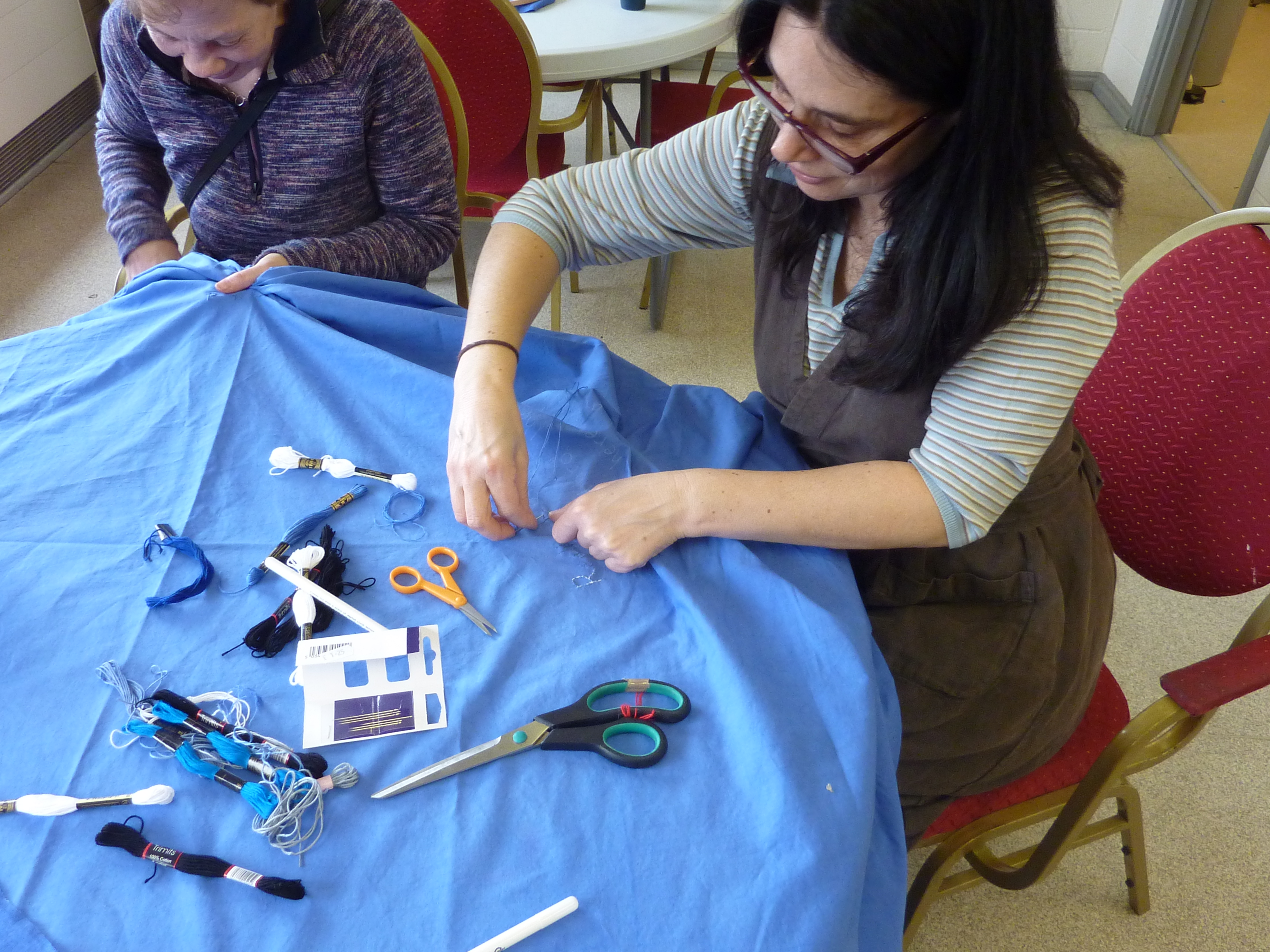
I am stitching into the cloth ‘Really blustery, driving thro’ the rain to be here. Looking out at Whaleys.’ If I look up I can literally see the stone factory building of Whaleys through the window, and this is where our fabric has been purchased. The first thing that I knew about Bradford was Whaley’s, the best selection of natural fabrics in England and it is literally opposite us as we develop our stitches into cloth! Next to me June is stitching ‘Warm and dry on a wet day’. And we are really appreciative that the space is so beautifully heated for us today.
On the table next to us I hear a conversation about how to start. ‘come – let us all think of a word’ I hear someone saying. It is necessary to be cooperative when working into the same fabric cloth. I later read the single words carefully stitched in large bold type into their fabric: ‘Diversity’ ‘Banter’ ‘Cohesion’ ‘ Lumituri’ ‘Smiles’ ‘Children’ ‘Memories’. Along an edge, in smaller text ‘Joy health for everyone in the world’.

And then …more people arrive. We move our table cloth that June and I have been working on, over to a larger circular table, so we can all squeeze round. This then accommodates two families and a single women sewing an angel using a little embroidery hoop. A further layer of activity then begins to take place over the fabric. A young girl wants to sew a unicorn, her father thinks quickly and resourcefully and gets up an image onto his phone, that he can then trace onto tissue paper. Mum helps with some of the stitches.
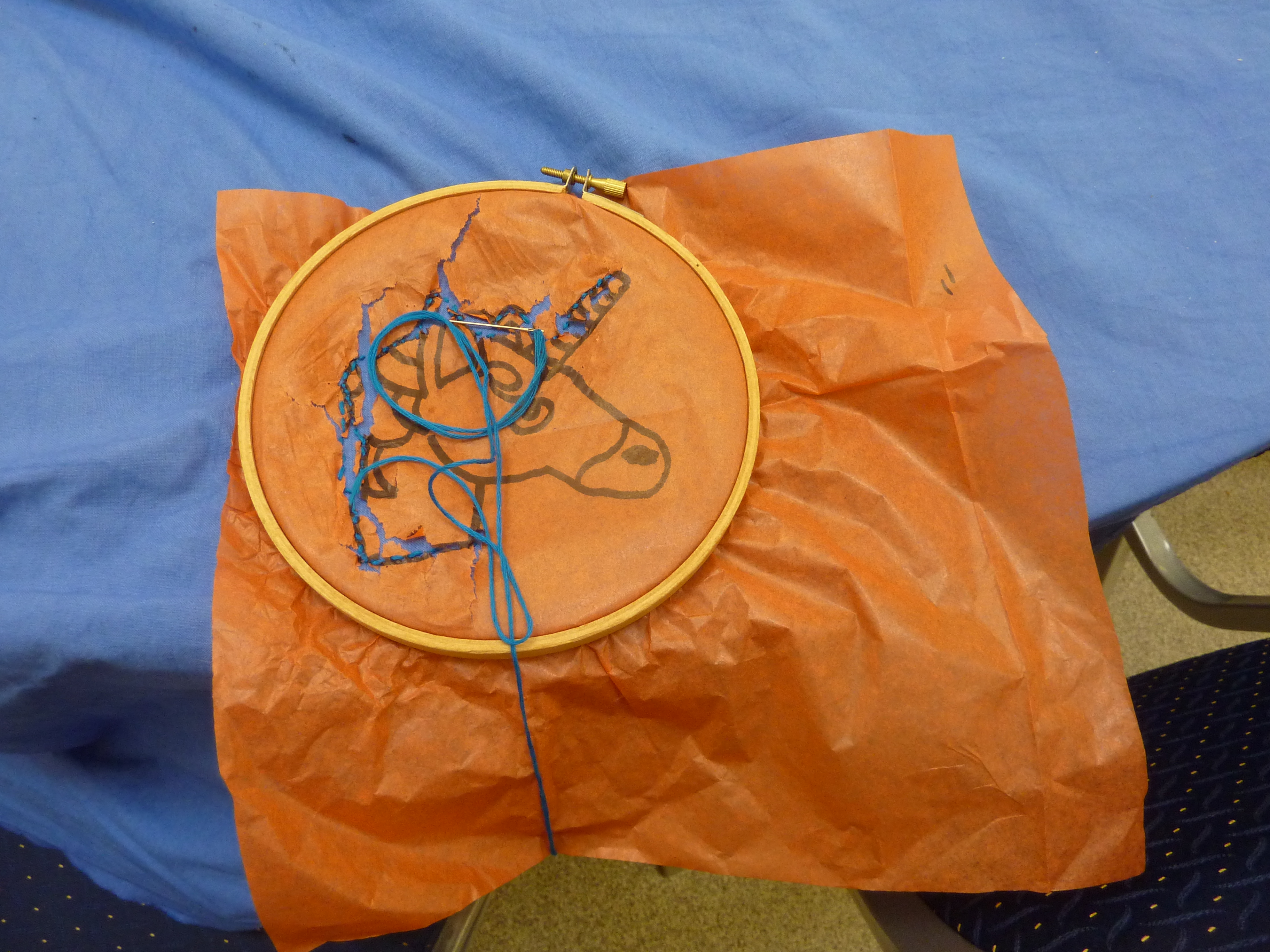
Sitting next to me a young boy is being taught to sew out the names in his family, slowly Tom Milton, Chloe Milton, Cody Milton and Eliza Milton take shape in black stranded thread.

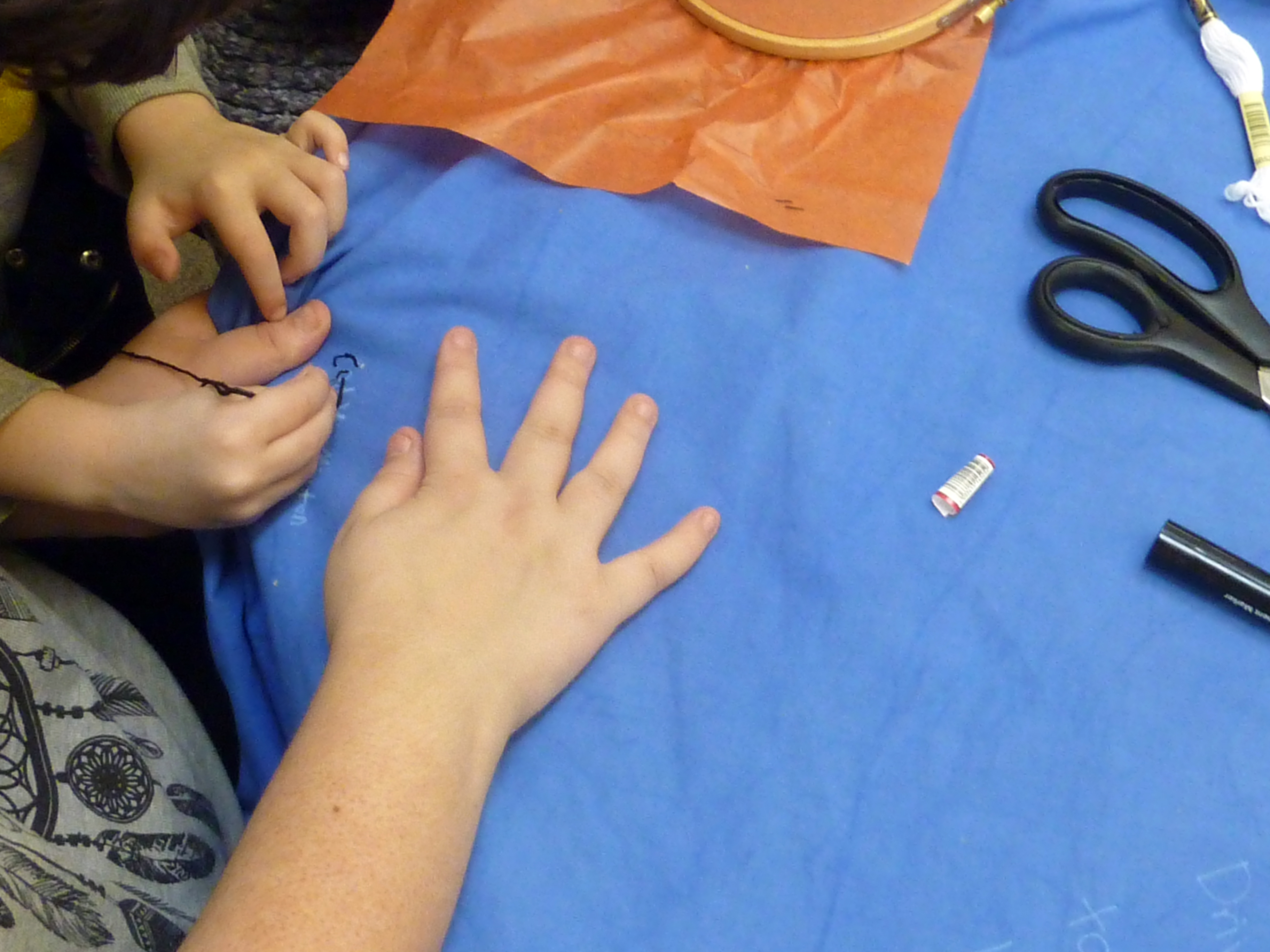
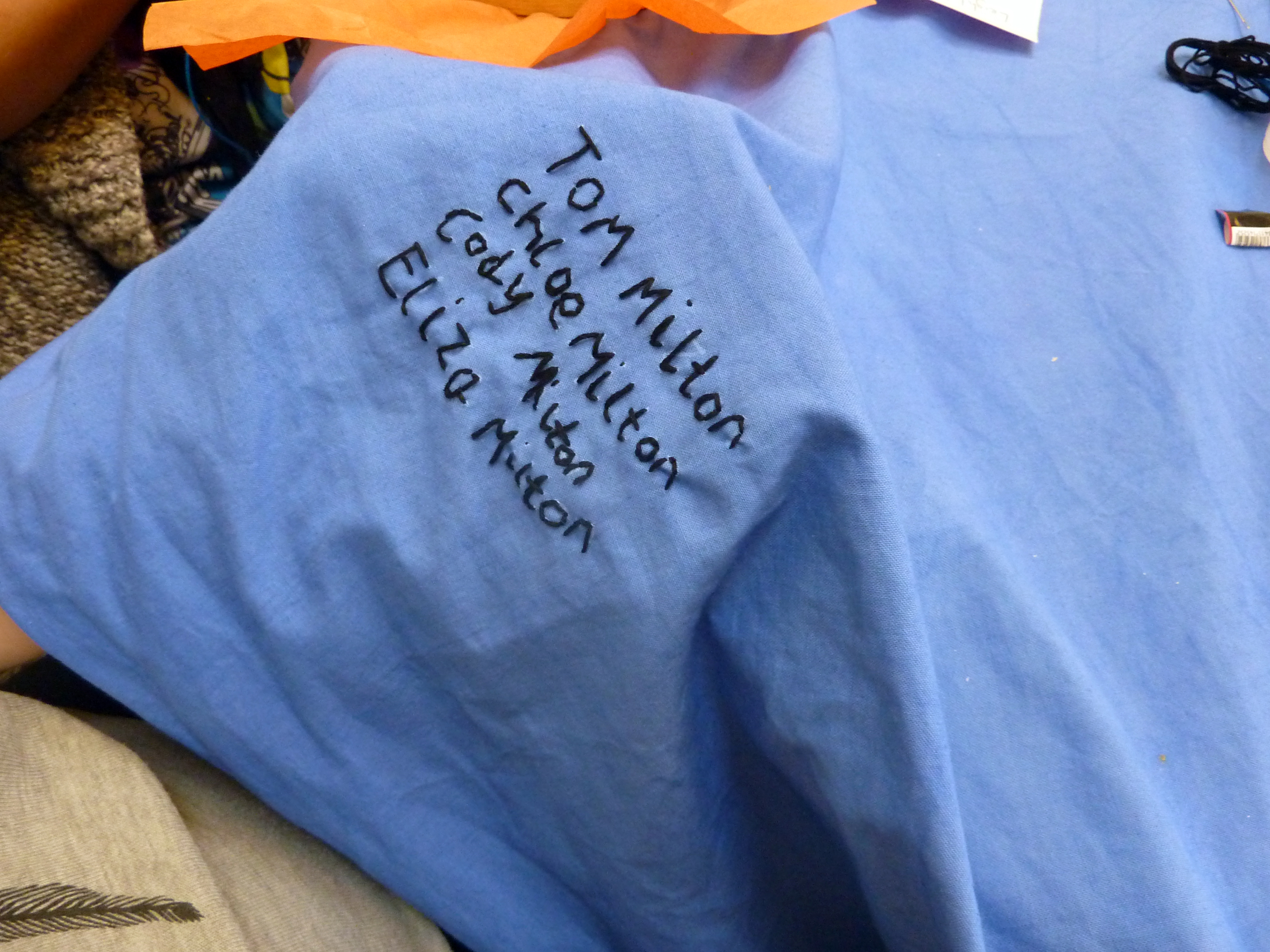
Meanwhile June has been preparing lunch. We advertised ‘small bites’ and cherries, grapes, baby tomatoes, halved pork pies, little sausages, hummus, crisps, slices of french bread, nicely cubed cakes fill our fourth round table. I think this may feel familiar to children, as, with the addition of paper plates, it is probably reminiscent of children’s party food. The food also gave our event a degree of informality.
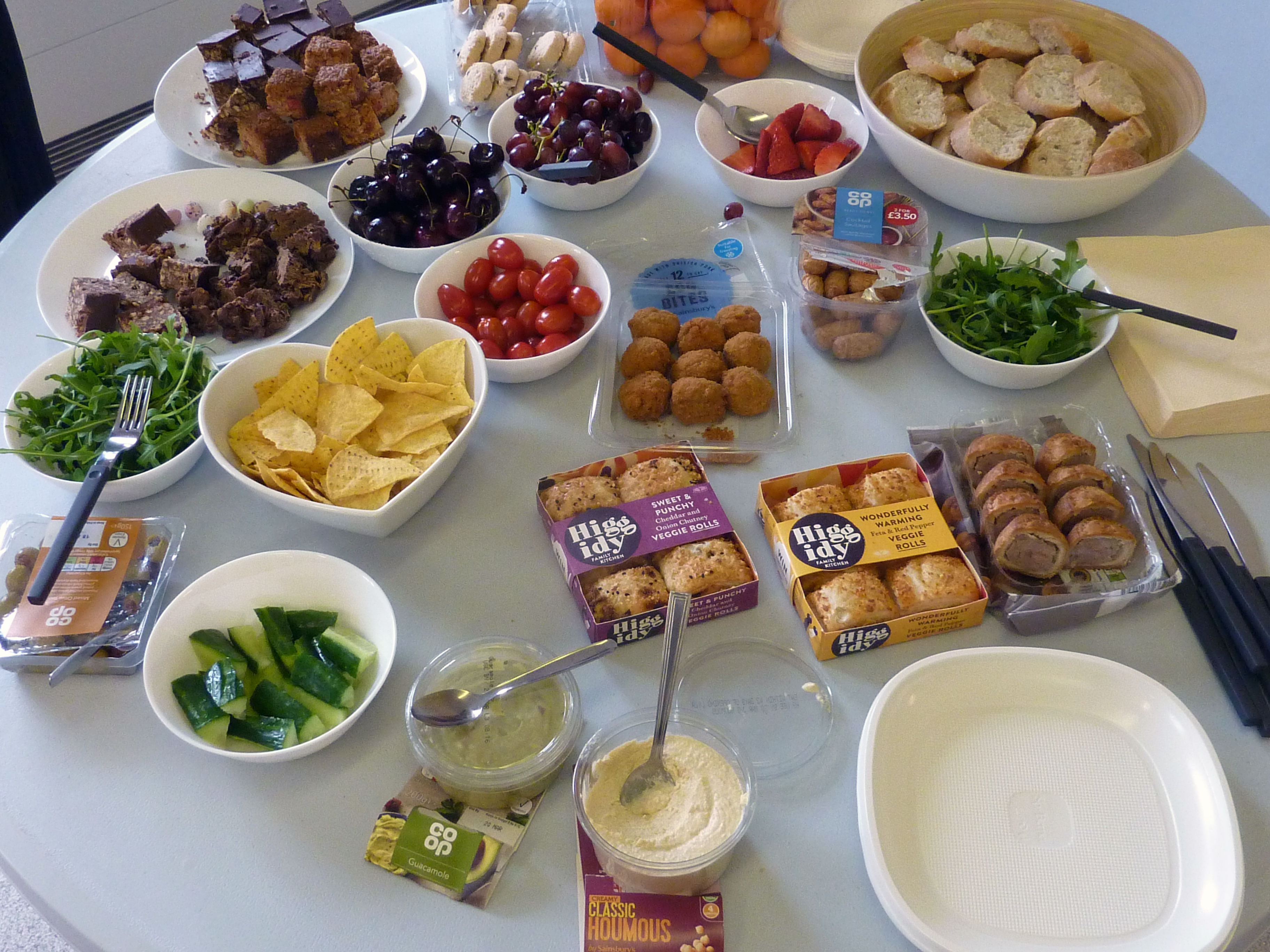
We had had a quiet start, but soon the room had become full and active with stitchery. We had a mix of people, all ages. I spoke over lunch with a local accountant. I counted two families, about four children, a refugee and her daughter, a lady on her own, our mother, granddaughter, grandmother trio, their friend, all collectively stitching away.. Some people knew about the event through word of mouth, others had seen our posters at Great Horton Community Hall. ‘When are you going to do this again’ ‘When is the next event’ ‘Can we take this on in our own community group’ were some comments we heard back from people there.

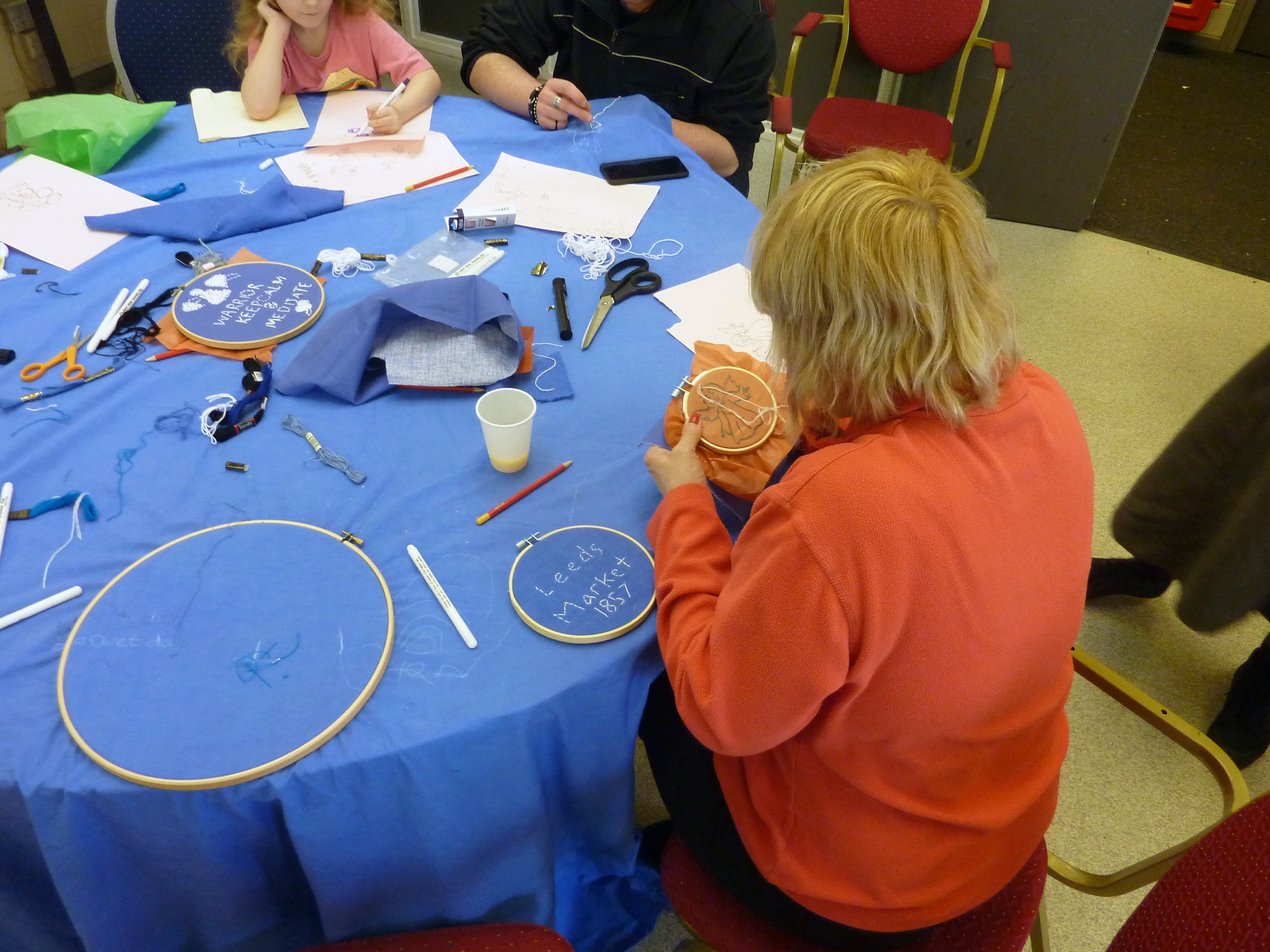
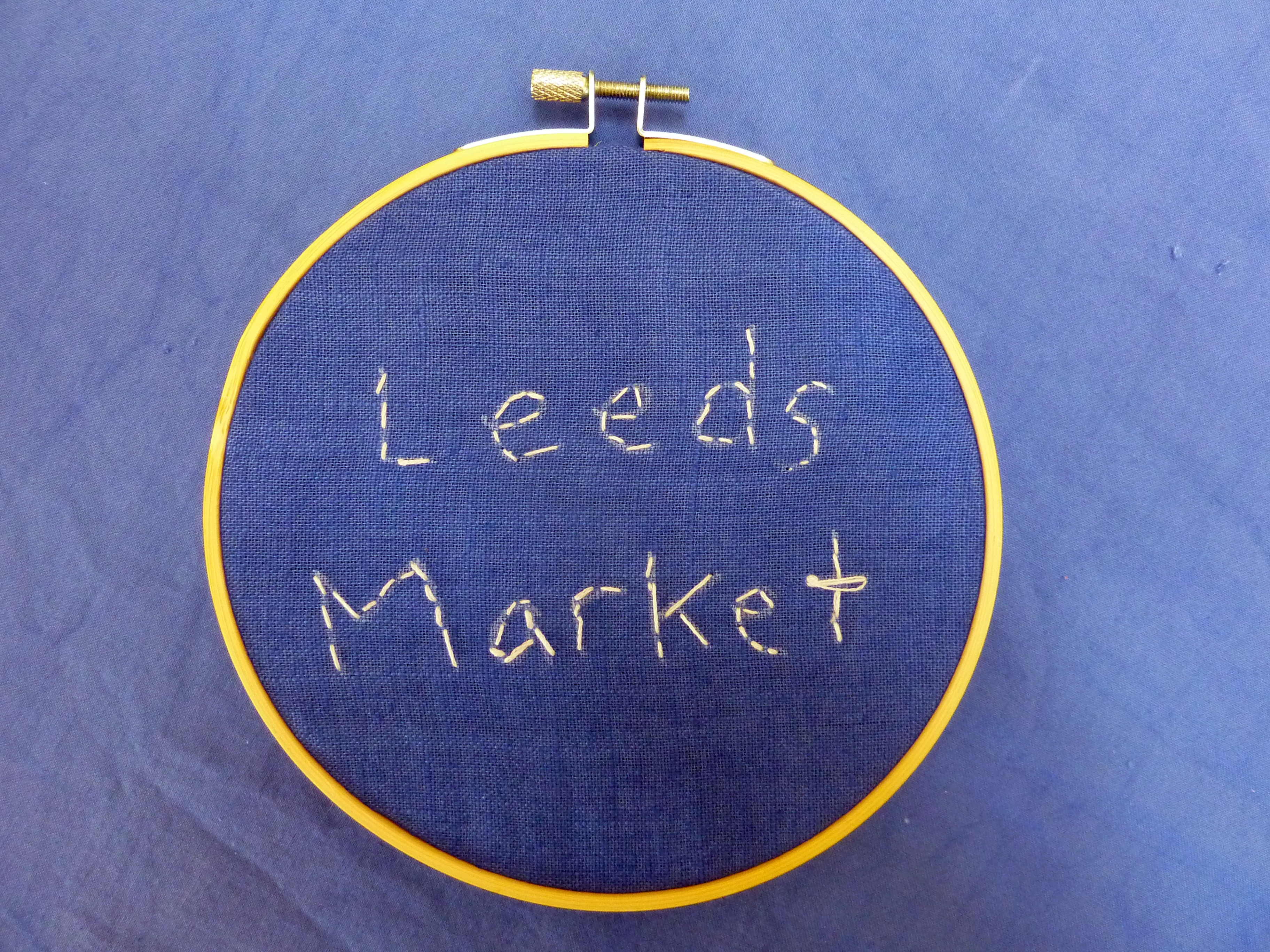
June’s ability to use the transferable skills of curator is seen in many small ways; the food for example, placed onto the table into manageable sizes, with the packaging placed beneath so people could interpret what they were eating, was sensitively presented. Also, being local seems to offer many benefits to the project, some of them subtle and everyday, but no less important. June knew, for example, knew that the caretaker of Great Horton Community Hall had overslept and had his number so he could pop round, almost immediately, to open up. June knew her way around the kitchen, could find glasses and knew where tea bags were kept – again highly useful when trying to work quickly and calmly across a range of tasks. Outside of the context of this event – but still very important to it – June had lobbied for round tables, being more democratic spaces than rectangular, and more conducive to open conversation. The round tables now form a key conceptual and practical resource to this project, and hopefully will do into the future. Finally, everyone knows June or may have heard of her, so people do not feel intimidated or threatened to take part in a project which is new to them.
